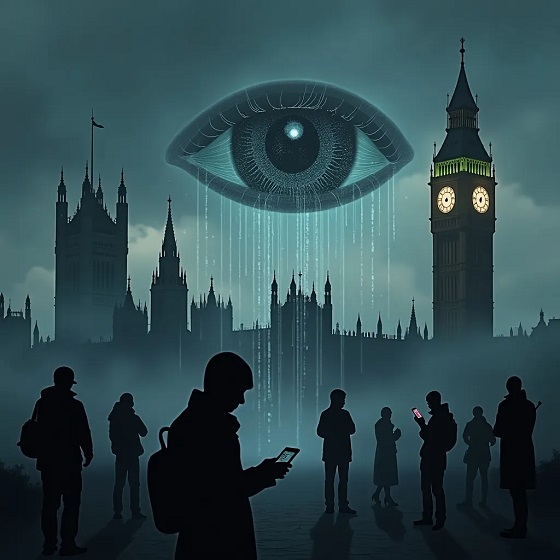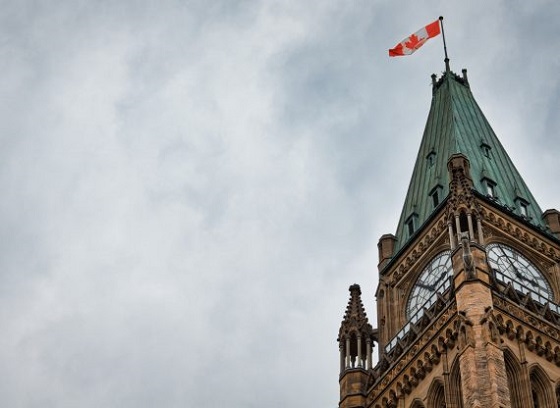Opinion
The Germans called her the ‘White Mouse’ for her elusiveness
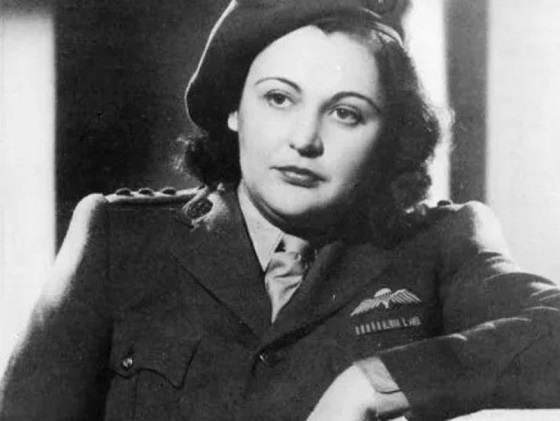
The female SOE operative who killed Nazis, with her own hands
“I have only one thing to say: I killed a lot of Germans, and I am only sorry I didn’t kill more. [on her wartime exploits] Freedom is the only thing worth living for.”
— SOE agent Nancy Wake
Australian beauty Nancy Wake, married a French millionaire and adroitly played the part of a society lady, but comes across as having been more comfortable shooting Nazis and blowing up trains and bridges than trading bon mots at cocktail parties.
If ever there was a female James Bond, Wake is the real deal.
Born in New Zealand in 1912 and raised in Australia, Nancy ran away at sixteen to chase adventure, first as a nurse, later as a journalist. In Paris, she saw fascism rise and vowed to resist it at any cost.
Her career as a spy began when she enlisted as a courier for the nascent French Resistance in Marseille in 1940.
As the wife of a powerful Frenchman, Wake was able to travel with a freedom that not many were granted following France’s surrender to Germany in 1940.
She began trekking through the Pyrenees as a human courier for the resistance movement in France often transporting food and messages to underground fighters.
Soon, however, she began to aid the escape of evaders and allied soldiers into Spain.
Over the months, her stature in the underground network grew, and her role evolved from courier to organizer. She engineered several diabolically clever and daring escapes from both French and Nazi prisons.
Word would spread throughout the German Gestapo of a mysterious dark-haired woman operating the southern escape.
She was known to the Maquis as “Madame Andrée,” but the Gestapo came to call her “the White Mouse” because she kept eluding their traps. She would adopt the moniker as the title of her autobiography four decades later.
Ultimately, Wake was responsible at least in part for moving more than a thousand downed Allied pilots, Jewish fugitives, hunted partisans, and other refugees to safety across the border in Spain.
She was tough — during a raid on a German arms factory, Wake killed a sentry with a judo-chop to the neck. — prickly, profane, disdainful of fools, and at times very, very funny.
She later said, “They’d taught this judo-chop stuff with the flat of the hand at SOE, and I practiced away at it. But this was the only time I used it — whack — and it killed him all right.”
She was also a hard drinker who could (and did) drink the partisans she led under the table. An SOE officer she worked with in France said, “I had never seen anyone drink like that ever, and I don’t think the Maquis had either. . . In my long life, it remains one of the most extraordinary things I have seen.”
She would eventually be apprehended in 1942 and spent four days being interrogated. But the Germans didn’t realize they had caught the White Mouse.
Albert Guérisse, a Belgian doctor and Resistance member (Code name O’Leary) told the German officer she was his mistress, the Germans believed him and set her free.
O’Leary would be tortured to make him reveal the names, duties and whereabouts of the other members of the line. He was put in a refrigerator for several hours and then beaten continuously but did not disclose any information of use to the Germans.
He was then held under the Nazis’ infamous Nacht und Nebel procedure in a series of concentration camps, beginning at Natzweiler and ending at Dachau.
He was again tortured at Dachau and sentenced to death. Fortunately the war ended before the sentence was carried out. Even the SS had failed to break his irrepressible spirit.
In 1943, Nancy’s husband Henri was captured and executed by the Germans. This tragedy only strengthened Nancy’s resolve.
When Wake’s Marseille-based network was betrayed by a Gestapo spy, she fled to Spain herself — on the seventh attempt, and only after six months of trying — and subsequently by ship on to England.
There, she attempted in vain to join General Charles de Gaulle‘s Free French. When the French declined to allow her into their ranks, she connected with Britain’s new Special Operations Executive (SOE).
Following months of intensive training to prepare her for combat, Wake parachuted into the mountains of central France in the belly of a Liberator bomber to equip and lead a force of Maquis partisans that grew to thousands as the Allied invasion of Normandy grew near.
“I was hardly Hollywood’s idea of a glamorous spy.
“Over civilian clothes, silk-stockinged and high-heeled, I wore overalls, carried revolvers in the pockets, and topped the lot with a bulky camel-haired coat, webbing harness, parachute and tin hat.
“Even more incongruous was the matronly handbag, full of cash and secret instructions for D-day. My ankles were bandaged for support when I hit the ground.
“But I’d spent years in France working as an escape courier. I’d walked out across the Pyrenees and joined the Special Operations Executive in England, and I was desperate to return to France and continue working against Hitler.
“Neither airsickness nor looking like a clumsily wrapped parcel was going to deter me…”
Upon a less than graceful landing, Nancy released herself from her parachute that was tangled in a tree.
Quickly, stripping her overalls she hid in a near-by bush until she heard a friendly voice from the distance.
She arrived as he, along with a good-looking young Frenchman named Henri Tardivat were removing her parachute from the branches of the tree.
Gallantly and in a manner typical of the French, Nancy recalls Tardivat commenting, “I hope all trees in France bear such beautiful fruit this year.”
In 1944, in a final effort to break up the French Marquis, 20,000 Germans descended on Nancy’s 7,000 fighters. In the confusion, her radio operator buried his wireless set and codes to ensure they remained out of the wrong hands.
Out of desperation to communicate with England, Wake began what she described as “that bike ride of mine.”
Setting off North, Wake rode through enemy occupied territory passing numerous German checkpoints. Women according to Wake, have a unique power in times of combat. She once explained her reasoning:
“I don’t see why we women should just wave our men a proud goodbye and then knit them balaclavas. A woman could get out of a lot of trouble that a man could not.”
She reached her destination and organized with England where the next airdrop of ammunition, food and supplies would be and ensured a replacement radio and codes were included. Riding day-and-night, Wake rode 500 kilometres in just 71 and half hours.
Soon after the completion of her marathon bike ride, Nancy re-connected with the Frenchman she met when she parachuted back into France. Tardivat suggested that if Nancy desired ‘a bit of fun’ she should join his attack on the Gestapo headquarters in Montucon.
“The most exciting sortie I ever made. I entered the building by the back door, raced up the stairs, opened the first door along the passageway, threw in my grenades and ran like hell.”
After the war, Nancy received numerous awards and accolades for her bravery and service. She was awarded the George Medal, the Croix de Guerre, and the Légion d’honneur, among many others. However, despite her achievements, Nancy remained modest and down-to-earth, never seeking the spotlight.
Wake died on 7 August 2011, aged 98, at Kingston Hospital after being admitted with a chest infection. She had requested that her ashes be scattered at Montluçon in central France.
— with files from Mal Warwick & Chloe Curran
THE MAKICHUK REPORT is free today.
But if you enjoyed this post, you can tell THE MAKICHUK REPORT that their writing is valuable by pledging a future subscription.
You won’t be charged unless they enable payments.
Agriculture
Bovaer Backlash Update: Danish Farmers Get Green Light to Opt Out as UK Arla Trial Abruptly Ends!
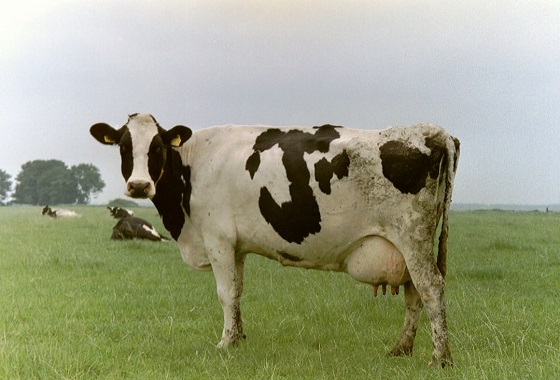
In a pivotal shift, Denmark’s Veterinary and Food Administration has issued new guidance: Farmers can immediately suspend Bovaer administration if they “suspect” it poses risks to herd health. On the heels of the Danish announcement—the major UK trial of Bovaer on 30 Arla Foods farms has abruptly ended amid health fears.
The Mandate Cracks: Farmers Given the Green Light to Opt Out
On November 5, 2025, Denmark’s Fødevarestyrelsen (Danish Veterinary and Food Administration) issued a press release and accompanying guidance clarified that farmers (specifically the herd manager, or besætningsansvarlige) could immediately exempt individual cows or entire herds from the mandatory Bovaer use if they suspected it was causing or exacerbating health issues, prioritizing animal welfare under existing regulations.
Sonia Elijah investigates is a reader-supported publication.
To receive new posts and support my work, consider becoming a free or paid subscriber.
This was in response to surging reports of cow illnesses since October 1, where farms with over 50 cows have been mandated to use the synthetic additive, Bovaer (containing 3-nitrooxypropanol), developed by DSM-Firmenich. If the farms do not comply, they face heavy fines.
Bovaer Backlash: Danish Cows Collapsing Under Mandatory Methane-Reducing Additive |
||||||
|
||||||
| Article updated: November 4 | ||||||
|
The guidance emphasized that exemptions apply to cases of feed-related metabolic disorders (e.g., fatty liver, milk fever, or rumen issues) and require documentation via a “tro- og loveerklæring” (declaration of good faith) on LandbrugsInfo, with veterinary consultation recommended for severe cases. No fines would apply for such welfare-based pauses, though farmers must still meet methane reduction goals via alternatives like increased feed fat. This effectively gave the “green light” for opting out on welfare grounds.
Reports surged of Danish dairy farmers unilaterally halting Bovaer administration, accusing the government of “poisoning” livestock to meet climate targets.
A November 3, 2025, article in LandbrugsAvisen (Denmark’s leading agricultural newspaper), quoted veterinarian Torben Bennedsgaard from BoviCura (a specialized cattle health advisory service closely tied to Danish dairy producers). He stated: “Every other farmer has problems with Bovaer.”
“Bovaer is a proven, effective and safe solution”
A spokesperson for DSM-Firmenich, the company that developed Bovaer, told Agriland, that “animal welfare is our highest priority”. They went on to state: “We are actively engaging with the relevant organisations to ensure that all these concerns are fully investigated and properly addressed..In previously reported cases, Bovaer was not identified as a contributing factor to the health concerns raised…Bovaer is a proven, effective and safe solution that has been successfully used for over three years by thousands of farmers in over 25 countries.”
UK Ripple Effects: Arla Trial Abruptly Halted
On 7 November, the BBC reported that the major UK trial of Bovaer on 30 Arla Foods farms concluded earlier than planned amid “farmer health concerns” for cows, echoing Danish reports. It stated: ‘Bovaer is now the focus of an investigation in Denmark after farmers raised fresh concerns but manufacturer DSM-Firmenich said the additive was “proven, effective and safe.”’
Arla, which supplies major retailers like Tesco and Aldi, is now reviewing data before deciding on wider rollout. The trial aimed to cut methane by 30% but faced criticism for lacking transparency on animal impact.
Jannik Elmegaard, of the Danish Food and Veterinary Administration, told the BBC: “They very aware that some herd owners have reported animals showing signs of illness after being fed with Bovaer” but it was “unclear how many cows were affected”.
Last year, I reported on the UK’s Arla trial—whilst digging through various safety assessment reports on Bovaer, I came across several troubling findings and anomalies.
BREAKING: Methane-Reducing Feed Additive Trialled in Arla Dairy Farms |
||||||
|
||||||
| On November 26th, Arla Foods Ltd. announced via social media their collaboration with major UK supermarkets like Tesco, Aldi, and Morrisons to trial Bovaer, a feed additive, aiming to reduce methane … | ||||||
|
In a public rebuttal, Frank Mitloehner, Professor of Animal Science at UC Davis and Director of the Clarify Center for Enteric Fermentation Research, posted on X ”Hogwash!”—dismissing viral claims of Bovaer-related cow health issues in Denmark by highlighting his lab’s ongoing research and widespread U.S. usage data.
The green light in Denmark is not a mere victory—it’s a damning admission that the emperor’s new feed has holes big enough for a whole herd to escape through.
As Arla licks its wounds and DSM-Firmenich doubles down on “proven safe,” the real trial begins: can climate crusaders stomach the science when it bites back?
If you appreciate the hard work that I do as an independent investigative journalist,
please consider supporting me with a paid subscription.
Subscribe to Sonia Elijah Investigates
armed forces
It’s time for Canada to remember, the heroes of Kapyong

“Be steady, kill and don’t give way!”
— Lieut.-Col Jim Stone’s order to his troops on the eve of battle
Korean peninsula, April 1951.
It’s spring in Korea, and things are warming up from the preceding brutal cold.
You are tired and hungry, and full of fear.
Your only friend, is a standard issue Lee-Enfield No. 4 Mk 1. A reliable bolt-action rifle in use for over a half century, and it’s got a mean kick.
But that badge on your shoulder, the Princess Patricia’s Canadian Light Infantry Regiment (2PPCLI) gives you confidence.
So does commander Lieutenant Colonel Jim Stone, a Second World War veteran.
And you are one mean mother-fucker, to put it nicely. Spoiling for a fight.
Instead, North Korean forces have been pushed across their border back into the North. It looked like an easy stint, garrison duty no less.
The thought of meeting one of those nice Korean girls wasn’t far away, and maybe having one of those weird Korean beers.
Man, was that about to change.
While gung-ho US General Douglas MacArthur repeatedly refused to heed Chinese warnings and US intelligence reports, China launched a massive surprise counteroffensive with approximately 300,000 soldiers, catching the overextended UN forces completely off guard.
MacArthur’s misjudgment was a critical error that prolonged the war for another two and a half years.
And a fellow named Hub Gray, a Canadian from Winnipeg, would end up in the maelstrom.
What was at stake? Hill 677, which controlled the entrance to the Kapyong River Valley north of Seoul. Beyond that, there was nothing, absolutely nothing, stopping the advancing communist forces from retaking Seoul.
The hill was a critical last stand.
The Aussies took it on the chin, first.
The 3rd Battalion, Royal Australian Regiment (3 RAR), bore the brunt of the initial attack and after heavy combat were forced to withdraw, with 155 casualties.
Captain Reg Saunders, the first Aboriginal Australian to be commissioned as an officer in the Australian Army, was Officer Commanding C Company, 3 RAR.
After the battle, he said: “At last I felt like an Anzac, and I imagine there were 600 others like me.”
While the Australians fought bravely, Stone ordered his Canadians, about 700 troops, to dig in on Hill 677 and prepare to repel a large brigade of massing Chinese forces, estimated at nearly 5,000-strong.
After attacking the Australians, the Chinese turned their attention to the PPCLI.
Death was on the menu, not a picnic. In waves.
The Canadians risked being wiped out. Outnumbered and outgunned.
As expected, on the night of April 22, 1951, an entire Chinese communist division swarmed them, hoping to take Seoul, only a few miles away. 2PPCLI was surrounded, and on its own.
It was a terrifying night of positions lost and retaken, hand-to-hand fighting in the dark, with bayonets, grenades, rifle butts and shovels.
Private Wayne Mitchell, despite being wounded, charged the enemy three times with his Bren gun. He earned the Distinguished Conduct Medal for his efforts.
The relentless waves of Chinese soldiers almost overran the position of D Company.
With his men securely entrenched below ground, company commander Captain J. G. W. Mills, desperate and overrun, called for an artillery strike on the position of his own 10 Platoon — what the Americans called “Broken Arrow.”
He relayed the request from Lieutenant Mike Levy, who was hunkered down with his men in shallow foxholes on the hill.
A battery of New Zealander guns obliged, firing 2,300 rounds of shells in less than an hour, destroying the Chinese forces on that position.
Though the barrage landed just metres from Levy’s position, he and his men were unscathed.
“I remember sitting down there in that trench one time during that fight and I was shaking and I was thinking, ‘What the f–k are doing here, you dumb shit?”‘ said Ernie Seronik, a member of the 2PPCLI’s D Company.
“You really can’t tell people about it, can’t describe it. You can’t know what it’s like until you’re there, the fear you have, and it stays with you. I was scared all the time.”
“When you sit in the dark and are looking for and waiting for them to appear, every stump that is out there is a person, the enemy,” recalled Seronik.
“At that time, the real terror comes from not knowing what’s going to happen to you. At any time a bullet can come out of nowhere and you’re dead. It happened a lot.”
At one point, a Chinese officer yelled, “Kill the American pigs,” in Chinese.
Levy, a platoon commander who understood the dialect, yelled back:
“We are Canadian soldiers, we have lots of Canadian soldiers here.”
Desperate, the Chinese attacked battalion headquarters from the rear. Hoping to break the Canadian lines.
If HQ fell, the Canadians would be driven off the hill and the road to Seoul would be open. It did not fall, in part thanks to Hub Gray.
He was in charge of a small mortar-machine gun unit. Coming at them: about 500 battle-hardened Chinese.
With the enemy almost on top of them, Gray’s men opened fire, the Chinese attack stalled, and then fell apart, described by one Canadian as “like kicking the top off an ant hill.”
Through it all, Stone refused to allow his men to withdraw, as he believed the hill was a critical strategic point on the UN front. He was right, it was.
Veteran David Crook, remembered the battle all too well.
“From sheer boredom to sheer terror. At times it didn’t stop. And then you’d get lulls where the enemy would be regrouping for another attack so we’d get a bit of a breather to think a little bit. But, most times it was just non-stop,” he said.
While they defended the hill, the Canadians were cut off and had to be supplied via air drop.
As Canadian soldier Gerald Gowing remembered: “We were surrounded on the hills of Kapyong and there was a lot of fire. We were pretty well out of ammunition and out of food too. We did get some air supplies dropped in, but we were actually surrounded… that was a scary moment, let me tell you.”
The Canadians were down to their last bullets when the Chinese advance finally broke. Hub’s machine guns had saved HQ.
Kapyong did not fall. Nor did Seoul. The Canadians held firm their positions.
The 2PPCLI were eventually relieved on the front line by a battalion of the 1st US Cavalry Division.
The battle contributed significantly to the defeat of the Chinese offensive, protecting the capital city of Seoul from re-occupation, and plugging the hole in the UN line to give the South Koreans time to retreat.
Both the Canadians and the Australians received the United States Presidential Unit Citation from the American government.
Five men in other units were (rightly) decorated for bravery that night. Hub Gray was not among them.
Levy wasn’t recognized for his bravery until 2003, when Governor General Adrienne Clarkson granted him a coat of arms.
In later years Hub Gray wrote his own account of Kapyong (Beyond the Danger Close) with a vivid account of the fighting, but made no mention at all of his own vital role. You’d scarcely know he was there.
But he was. A true Canadian hero. Along with all the rest.
Every child/student in Canada, should know their names, and what they did.
Hubert Archibald Gray known as “Hub” to all his friends, passed away peacefully in his sleep on Nov. 9, 2018, in Calgary, with family at his bedside. He was 90.
— with files, from the National Post
If you enjoyed this post, you can tell THE MAKICHUK REPORT that their writing is valuable by pledging a future subscription.
-

 armed forces1 hour ago
armed forces1 hour agoIt’s time for Canada to remember, the heroes of Kapyong
-

 Business1 day ago
Business1 day agoCBC cashes in on Carney as the news industry playing field tilts further in its favour, crippling the competition
-

 Daily Caller14 hours ago
Daily Caller14 hours agoMcKinsey outlook for 2025 sharply adjusts prior projections, predicting fossil fuels will dominate well after 2050
-
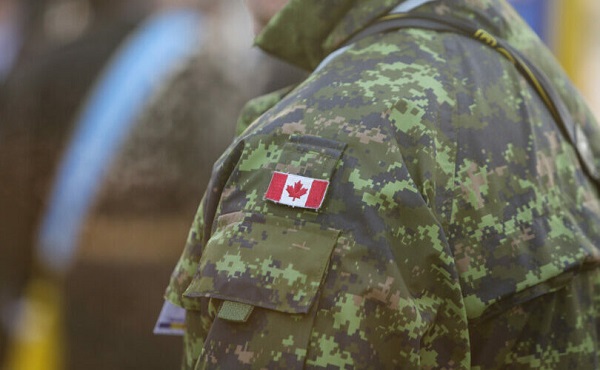
 armed forces1 day ago
armed forces1 day agoWhy Do Some Armed Forces Suffer More Suicides Than Others?
-

 Agriculture21 hours ago
Agriculture21 hours agoFarmers Take The Hit While Biofuel Companies Cash In
-

 Business14 hours ago
Business14 hours agoTrump: Americans to receive $2,000 each from tariff revenue
-

 Business5 hours ago
Business5 hours agoCarney’s Floor-Crossing Campaign. A Media-Staged Bid for Majority Rule That Erodes Democracy While Beijing Hovers
-
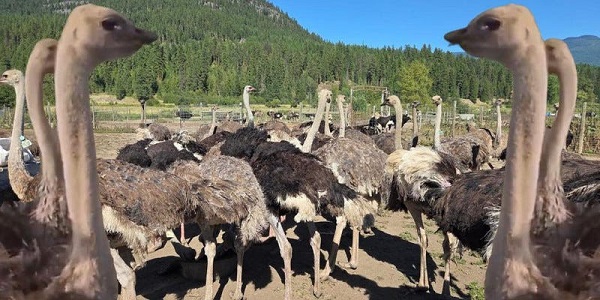
 Agriculture1 day ago
Agriculture1 day agoThe Canadian Food Inspection Agency’s Bloodlust for Ostriches: Part 2























